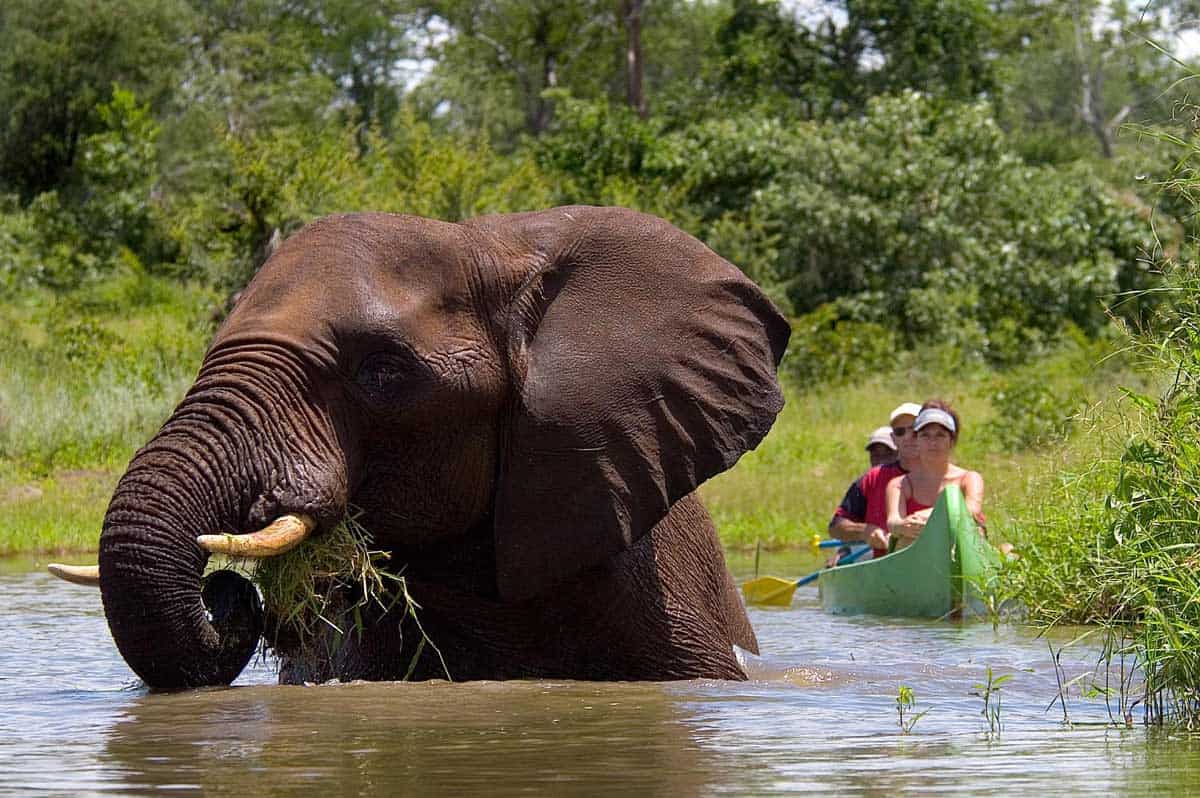
Editor’s Note: We’re all dreaming of travel ahead. Here’s some inspiration for future adventures. We share places, products and activities we recommend. If you make a purchase using a link on our site, we may earn a commission.
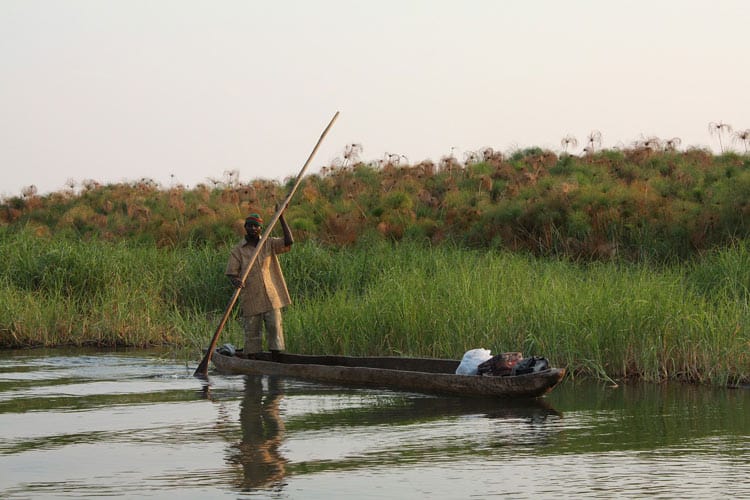
The Zambezi River
“Crocodiles are everywhere — keep your hands and feet in the canoes,” warned Paul Grobler, a safari guide with 17 years of experience leading trips down the Zambezi River. “You must also beware of hippos.”
The safety briefing is intense and thorough before embarking on a canoe excursion of Zambia’s Lower Zambezi National Park.
Although there are a variety of safaris for observing wildlife, from game drives to riverboat rides, offered by a variety of operators, canoeing can be the most exhilarating way to witness the region’s diverse ecology. The Zambezi River is the fourth-longest river in Africa.
From its source in Zambia, it eventually empties into the Indian Ocean in Mozambique after a 1,600-mile-long (2,574 km) twisted journey through south-central Africa. It’s a rich watery vein that quenches the often thirsty, drought-distressed region. The Zambezi flows along the border of Zambia and Zimbabwe.
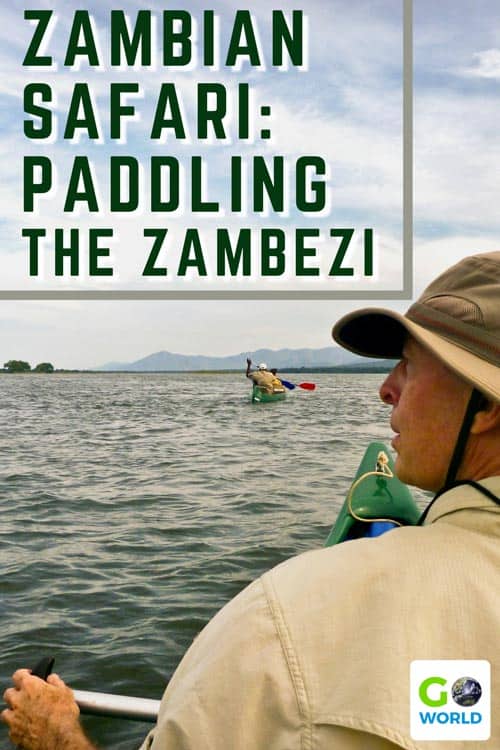
Zambezi National Park
The Lower Zambezi National Park lies opposite Zimbabwe’s better-known Mana Pools Reserve, so the whole area on both banks of the river forms a massive wildlife sanctuary where animal activity abounds.
Elephant herds gather at the shoreline to drink and bathe, while enormous males wade to small islands mid-river to graze on the lush vegetation. Fishing eagles soar overhead, and busybody baboons scamper along the river’s edge. Hundreds of noisy, sociable hippopotamuses pepper the waterway and command the narrow channels.
Established in 1983, the Lower Zambezi National Park is Zambia’s newest protected reserve. With relatively few visitors and little development, it remains a hidden gem. Several lodges and tent camps, ranging from rustic to luxurious, operate in the park.
The Zambezi River’s current is swift, which makes the canoeing nearly effortless, as the boats glide downstream. This particular stretch of the river offers only calm and peaceful waters. Our guide guaranteed there would be more drifting than paddling, but the water’s ominous inhabitants gave me pause.
The cartoonish-looking hippopotamuses often depicted in children’s stories as harmless ballerinas are realistically one of Africa’s most fearsome beasts.
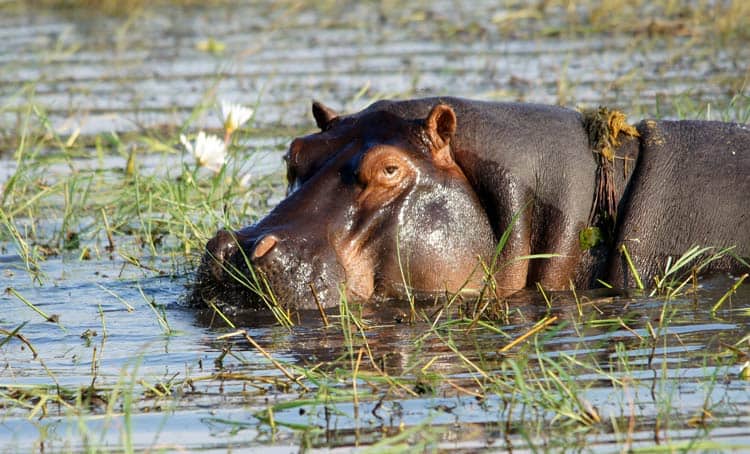
Hippos & Crocodiles
Their roly-poly 3,300-to-7,000-pound (1,500-3,175 kg) bodies emit loud, comical, whoopee-cushion choruses, but entering their territory is no laughing matter.
Hippos reportedly kill more people than lions, and safari guides are chock-full of gory stories about the territorial river tyrants. Of course, the guides are always quick to emphasize that neither they nor their groups have ever been harmed.
Menacing, prehistoric-looking Nile crocodiles fill the river in incalculable numbers, slicing through the darkness, unnoticed, beneath boats. Bearing a reputation as vicious man-eaters, the quiet and agile reptiles can reach lengths of 16 feet (5 m) and weigh up to 1,100 pounds (500 kg).
“They won’t bother us,” Grobler confidently assured us. “Just keep your bodies inside the boats.”
Crocodiles and hippos aside, other river hurdles include tree stumps resting just below the surface.
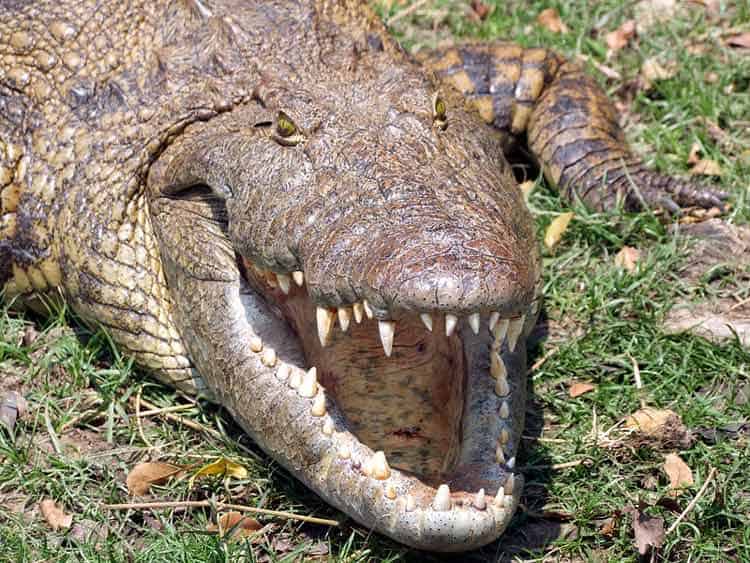
It’s Time for Canoeing the Zambezi
We were instructed to keep our 20-foot-long (6 m) canoes to the shallows and steer clear of ripples in the glassy water, indicating underwater obstacles.
During the safety briefing, it’s easy to lose confidence and question your capabilities, but we were promised that canoeing is the best way to experience Zambia’s enthralling wilderness. I put my trust in our guide, swallowed my thickly forming trepidation, and donned a life vest.
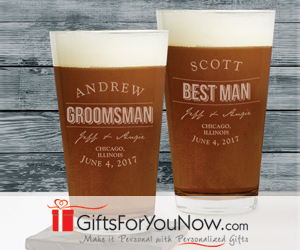
It took mere moments for my fear to melt away after easing the canoe into the glassy water. Our group of canoes glided peacefully down a narrow channel in silence, passing plovers, egrets and a lonesome grazing cape buffalo.
While floating downstream, time loses meaning. Everything is measured in moments as we absorb every chirp, splash and moan, every ripple in the water, every movement of grass. Did a breeze rustle that bush, or is something lurking behind it?
Africa is a majestic dichotomy, tranquil yet treacherous. Its magnificence soothes the soul while creating acute alertness rarely experienced elsewhere.
My mind never drifted nor daydreamed, but I relaxed and discovered every sight, sound and smell. On this river deep in Africa’s belly, it’s easy to find a deep sense of peace, connection and vulnerability to the environment.
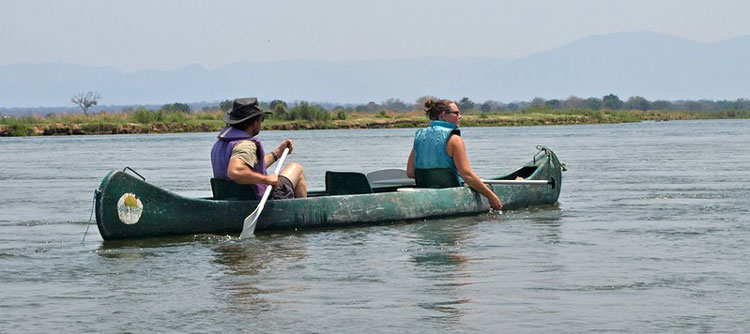
Going Through The Narrow Channel
As we slid through a narrow channel on the Zambezi, Grobler slowed his lead canoe. Hippos ahead were blocking our passageway. Two powerful gray heads breached the surface, staring at us with hard eyes and tangible frustration.
One snorted loudly and quickly submerged. We waited. He surfaced again, watching us while we watched him. Grobler sat aloof and relaxed, explaining that this was just part of the power game between the animals and us.
The hippos would submit by leaving the water, but I had my doubts, as the standoff persisted minute after long, intense minute. Finally, one brawny body relinquished control of the channel by scrambling onto the shore, the other following closely behind.
We quickly paddled through the narrow waterway, hugging the left side, as they stared at us from land on the right.
Invigorated by the close encounter, we paddled onward. Dead ahead was another discovery. The pungent odor found us before we saw the telltale sign of big cat activity.
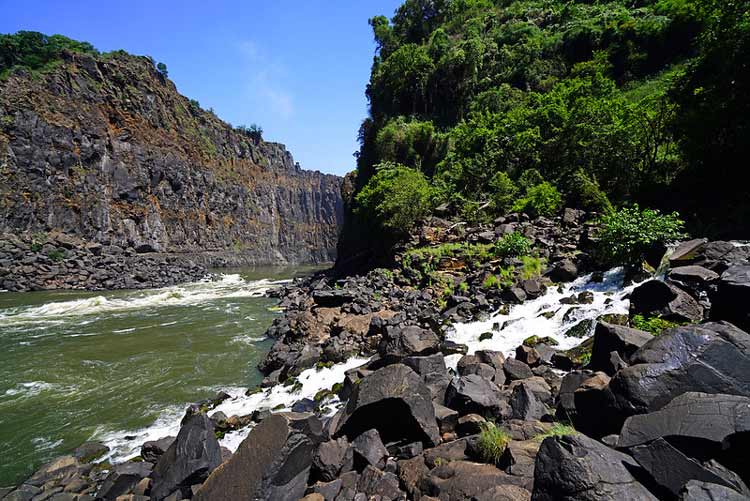
Watching the Buffalo
A half-devoured cape buffalo carcass lay at the water’s edge. We slowed our canoes, keeping a safe distance away, and docked on a thick patch of water hyacinth in the middle of the channel.
A pride of female lions was resting in the shade, keeping guard over their kill.
With bloodstained mouths and bloated bellies, they panted heavily. The cats were taking a break from their gorge-fest, protecting the carcass from scavengers’ greedy jaws, such as the large crocodile that quickly slithered into the river as we approached. Feeling vulnerable yet mesmerized, we watched nature’s brutal beauty as it watched us.
The sun was getting low in the sky, sending a buttery gold light across the water, as we left the channel and glided into the wide river, allowing the gentle current to carry our canoes downstream.
A young bull elephant was crossing the river as we drifted in his direction. He harshly warned us to navigate elsewhere by flaring his ears, holding his tusks high in the air and blasting a trumpeting cry.
It was an unambiguous gesture to intimidate us, and it worked. Our guide, however, remained calm as he slowly back paddled.

A Young Bull’s Show
We followed his lead, working against the current to slow our drift. Within moments, the bull relaxed and waded toward shore as if nothing had happened.
“Just a young bull showing off. Nothing to worry about,” Grobler said flatly, never having flinched.
Thankfully, no other elephants we encountered were “show-offs.” The many enormous old males in the river were quietly grazing.We watched in awe, cameras in hand, hoping to capture each extraordinary moment on film.
Having a camera like the PowerShot ELPH 190 IS for safaris, hikes or international trips is extremely handy. This camera is lightweight, durable and has an image-stabilizer, making sure you get a quality picture even if the conditions are changing. Check out the Canon camera selection from here.
With the afternoon quickly waning, we paddled to shore, where a Land Cruiser awaited us. The Zambezi river is enchanting by day, but very dangerous at night; we would make our way back to camp by vehicle. While the fiery glow of the setting sun drenched the river in glowing orange, pink and golden embers, I quietly mused about our astounding day on the water.
When the last sliver of light slipped behind the escarpment, we journeyed into the bush for a night game drive, hoping to witness prides of lions and elusive leopards in their nocturnal kingdom.
Just one amazingly ordinary day in Zambia’s Lower Zambezi National Park.
If You Go
Chiawa Camp – www.chiawa.com
Chiawa Camp offers nine luxurious tented accommodations with raised hardwood decks, electricity and running water. The camp is set among a lush grove of mahogany trees on the water’s edge.
The outfit arranges game drives, riverboat cruises, and fishing, walking and canoe safaris. The guides are well seasoned, and the tours are designed for every level of ability. The camp is open only during the dry season, from May to October.
Zambia National Tourism Board – www.zambiatourism.com
- The Low-Key Magic of Ghent, Belgium - April 22, 2024
- Discover the Hidden Charm of Extremadura in Spain - April 20, 2024
- Life of a Champion: Exploring the Muhammad Ali Center in Louisville - April 19, 2024
